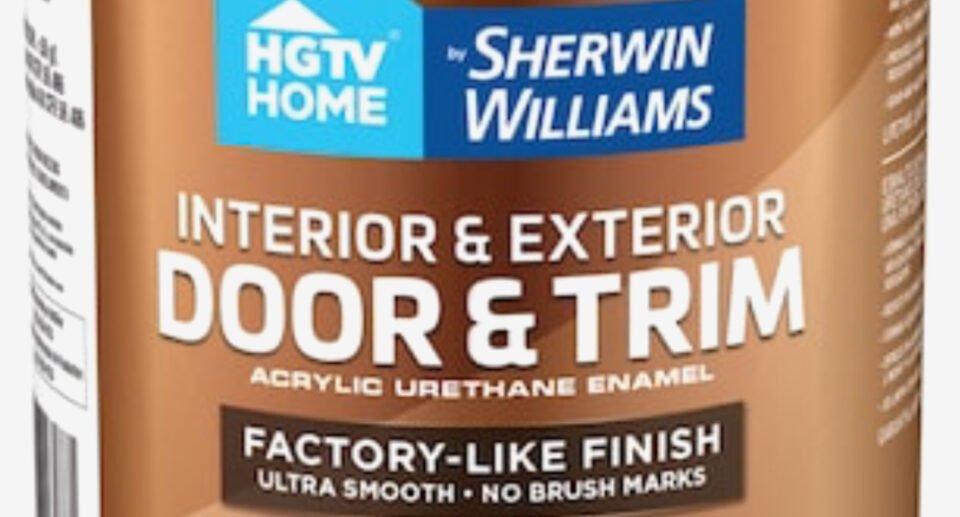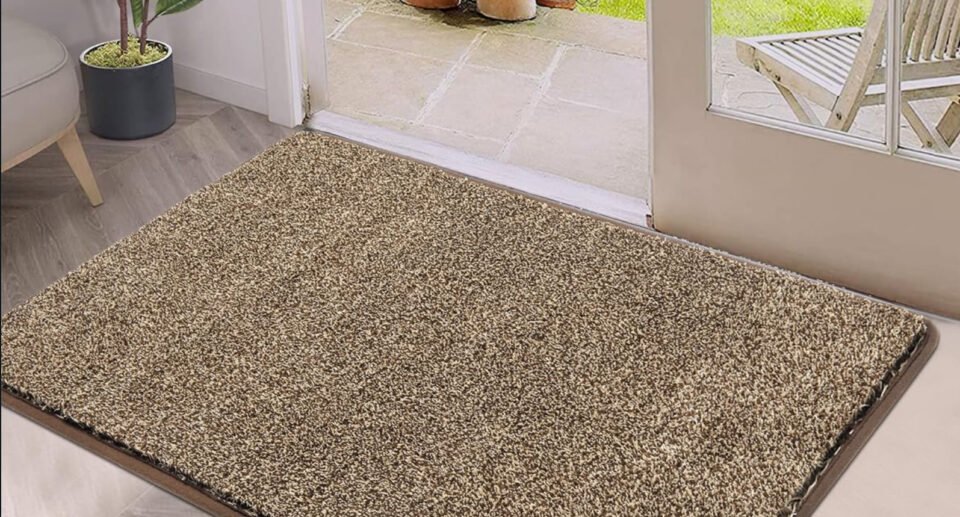Best Finish for Interior Doors: The Ultimate Guide

Table of Contents
ToggleWhen it comes to interior doors, choosing the right finish is crucial for both aesthetic and practical reasons. The finish not only affects the appearance of the door but also its durability and ease of maintenance.
With so many options available, it can be challenging to determine which finish is the best for your interior doors.
One of the most important factors to consider when selecting a finish for interior doors is durability. Doors are subject to frequent use, which can cause wear and tear over time. A durable finish can help protect the door from scratches, stains, and other damage.
Another consideration is the aesthetic appeal of the finish. Some finishes, such as high-gloss, offer a sleek and modern look, while others, such as matte, provide a more subdued and understated appearance.
Ultimately, the best finish for interior doors will depend on personal preference and the specific needs of the space. The most popular finishes are satin, semi-gloss, and high-gloss.
Types of Finishes for Interior Doors
When it comes to finishing interior doors, there are several options to choose from. The right finish will depend on the type of door, the look you want to achieve, and how much wear and tear the door is likely to endure.
Paint Finish Options
Paint is a popular choice for finishing interior doors because it can be used to create a variety of looks, from sleek and modern to classic and traditional. Here are some of the most common paint finishes used for interior doors:
- Gloss: Gloss paint has a high shine and reflects a lot of light. It’s a durable finish that is easy to clean, but it can also highlight imperfections in the door’s surface.
- Satin: Satin paint is less shiny than gloss, giving doors a warm and inviting look. It’s a good choice for areas with moderate activity, like a living room or hallway. Satin finishes are reasonably durable and easier to clean than flat or eggshell finishes. The slight gloss of satin paint can also hide imperfections better than higher gloss finishes.
- Semi-gloss: Semi-gloss paint has a medium shine and is a good choice for areas that get a lot of traffic, like a bathroom or kitchen. It’s durable and easy to clean, but can also highlight imperfections like gloss paint.
- Eggshell: Eggshell paint has a low shine and is a good choice for a more subtle look. It’s a durable finish that’s easy to clean, but can also highlight imperfections in the door’s surface.
- Matte: Matte paint has no shine and is a good choice for a more understated look. It’s not as durable as other finishes and can be difficult to clean, but it can also hide imperfections in the door’s surface.
Stain and Varnish Options
Stains and varnishes are another popular choice for finishing interior doors. They can be used to enhance the natural beauty of wood doors and provide a protective layer. Here are some of the most common stain and varnish finishes used for interior doors:
- Lacquer: Lacquer is a clear, high-gloss finish that is durable and easy to clean. It’s a good choice for modern or contemporary doors.
- Urethane: Urethane is a clear, high-gloss finish that is durable and easy to clean. It’s a good choice for doors that will be exposed to a lot of wear and tear.
- Oil-based paint: Oil-based paint is a durable finish that provides a smooth, even coat. It’s a good choice for doors that will be exposed to a lot of wear and tear.
- Latex: Latex is a water-based paint that is easy to clean and dries quickly. It’s a good choice for doors that won’t be exposed to a lot of wear and tear.
Application Techniques and Tools
When it comes to painting interior doors, applying the paint properly is essential to achieving a smooth and even finish. Here are some techniques and tools that can help you achieve the best results.
Preparation and Priming
Before applying any paint, it is important to prepare the surface properly. This involves cleaning the door thoroughly, sanding it to remove any imperfections, and applying a primer.
The primer will help the paint adhere better to the surface and provide a more even finish.
To apply the primer, use a brush or roller, depending on the size of the door. A brush is ideal for smaller areas, while a roller is more efficient for larger surfaces.
Be sure to use painter’s tape to protect any areas you don’t want to paint, and lay down a drop cloth to catch any drips.
Brush vs. Roller
When it comes to applying paint, there are two main options: a brush or a roller. Each has its advantages and disadvantages, and the choice will depend on the size of the door and personal preference.
A brush is ideal for smaller areas, such as the edges and corners of the door. It allows for greater precision and control, and can be used to create a smooth finish. However, it can be time-consuming and may leave brush marks.
A roller, on the other hand, is more efficient for larger surfaces, such as the face of the door. It can cover a larger area more quickly and evenly, and is less likely to leave streaks. However, it may not be as precise as a brush, and can be more difficult to use in tight spaces.
Avoiding Drips and Streaks
One of the most common problems when painting interior doors is drips and streaks. These can be caused by applying too much paint at once, or by using a paint that is too thick.
To avoid drips and streaks, apply the paint in thin, even coats, and wait for each coat to dry completely before applying the next. This will help prevent the paint from running or sagging.
It is also important to use a high-quality paint that is designed for interior doors. This will provide better coverage and durability, and help ensure a smooth and even finish.
Choosing the Right Finish for Your Door
When choosing the right finish for your interior doors, there are several factors to consider. Two essential factors to consider are the room function and the matching home decor.
Considering Room Function
The function of the room should be a significant consideration when choosing the right finish for your interior doors.
For example, in high-traffic areas such as hallways, it is best to choose a finish that is durable and easy to clean.
Semi-gloss and satin finishes are popular choices for interior doors in high-traffic areas due to their balance of durability, ease of cleaning, and aesthetic versatility.
In the kitchen and bathroom, it is essential to choose a finish that can withstand moisture and humidity. A semi-gloss or high-gloss finish is ideal for these areas as they are easy to clean and can resist moisture.
Matching with Home Decor
The finish of your interior doors should also match the home decor.
If the home has a traditional design, it is best to choose a finish that complements the traditional style. A satin finish in a neutral color can be an excellent choice for traditional homes as it can blend seamlessly with the rest of the decor.
For modern homes, a high-gloss finish in bold colors can add a touch of contemporary style. A high-gloss finish can also make a statement and add aesthetic appeal to the interior doors.
Maintenance and Durability
When it comes to interior doors, maintenance and durability are two of the most important factors to consider. After all, doors are subjected to daily wear and tear, and they need to withstand the test of time.
In this section, we’ll discuss the best ways to maintain and care for your interior doors, as well as the finishes that offer the best protection against scratches, fingerprints, moisture, and humidity.
Cleaning and Care
One of the easiest ways to maintain your interior doors is by keeping them clean and free of dust and dirt. Regular cleaning can help prevent scratches and other damage, and it can also help extend the life of your doors.
To clean your doors, simply use a soft cloth or sponge and a mild cleaning solution. Avoid using harsh chemicals or abrasive materials, as these can damage the finish.
For doors with a high-gloss finish, it’s important to use a non-abrasive cleaner that won’t scratch the surface.
You can also use a microfiber cloth or a soft-bristled brush to remove dust and debris. For doors with a matte or satin finish, you can use a mild soap and water solution, or a specialized cleaner designed for these types of finishes.
Touch-Ups and Longevity
Even with proper care and maintenance, interior doors can still become scratched or damaged over time.
To keep your doors looking their best, it’s important to touch up any scratches or nicks as soon as possible.
For doors with a painted finish, you can use a touch-up paint that matches the original color. For doors with a wood finish, you can use a wood filler or a stain marker to fill in any scratches or dents.
In terms of longevity, the best finishes for interior doors are those that offer the most protection against scratches, moisture, and humidity.
According to House Digest, the semi-gloss finish is one of the most popular choices for interior doors because of its impressive durability and ease of cleaning.
Benjamin Moore’s Advance and Aura lines are also known for their quality and durability, making them a favorite among professional painters.
When it comes to protecting your doors from moisture and humidity, wax, shellac, and lacquer finishes are not recommended, as they can become damaged if they are exposed to water. Instead, opt for a finish that is water-resistant and can withstand changes in humidity and temperature.
Conclusion
In conclusion, selecting the best finish for interior doors depends on the desired look and level of durability. The most popular finishes are satin, semi-gloss, and high-gloss.
Satin finishes are less shiny than semi-gloss. They are best used in areas with moderate activity like a living room or hallway.
Semi-gloss finishes are durable, washable, and have a glossy appearance that highlights the surface it’s applied to against flat.
High-gloss finishes are the most reflective, durable, and washable, but they also highlight imperfections on the door surface.
When it comes to wooden doors, varnish is a unique type of finish that enhances the natural beauty of the wood. It creates a hard coating that protects it from virtually every type of weather damage and even physical damage.
Wax, shellac, and lacquer finishes can become damaged if they are exposed to water, chemicals, solvents, scratches, and heat.
Overall, it’s important to consider the level of activity in the room and the desired look when selecting a finish for interior doors. Satin and semi-gloss finishes are suitable for most rooms, while high-gloss finishes are best used in areas with low activity like a bedroom or closet.
Varnish is an excellent option for wooden doors that require extra protection from weather and physical damage.

Hello, I’m Keith Jones. I’m the author and head of content here of door and window guide. I’ve been in the window and door industry for over 10 years in the UK and North America. I’ve had quite a few roles during my career mainly in Worldwide sales. I’m now semi retired so I thought I’d put my knowledge to good use educating people about all they might need to know about door and window related topics.





